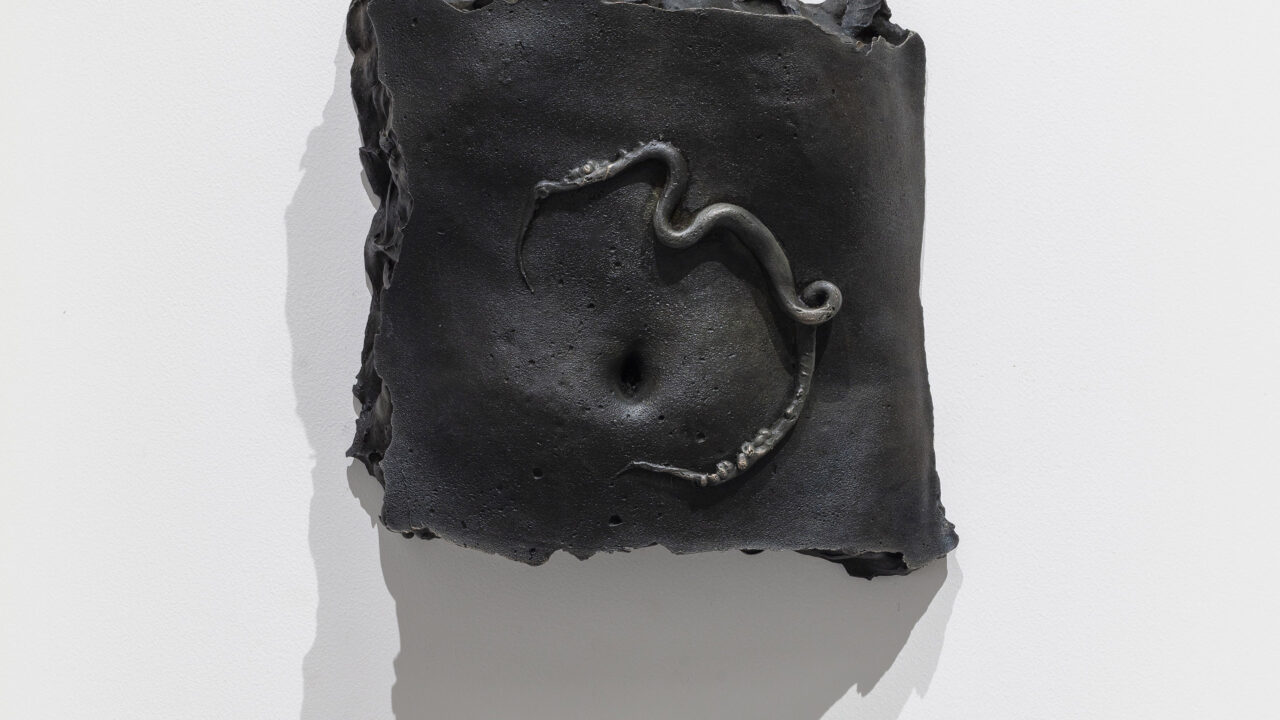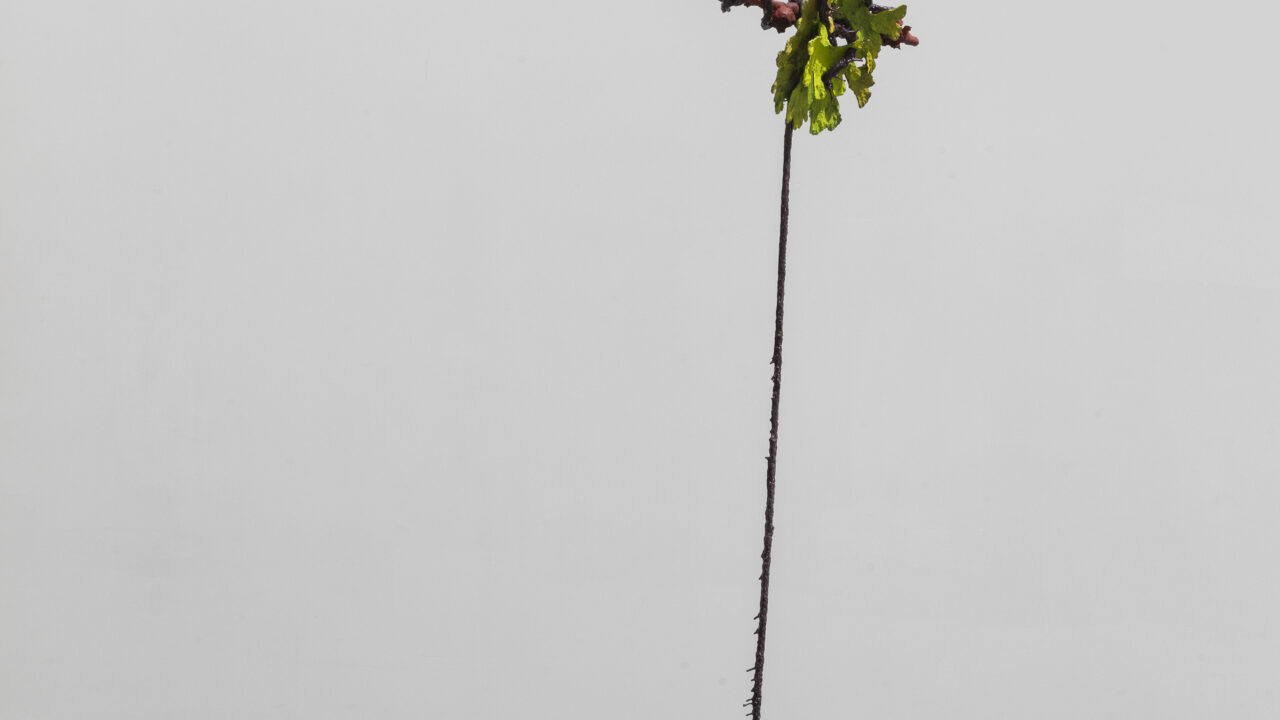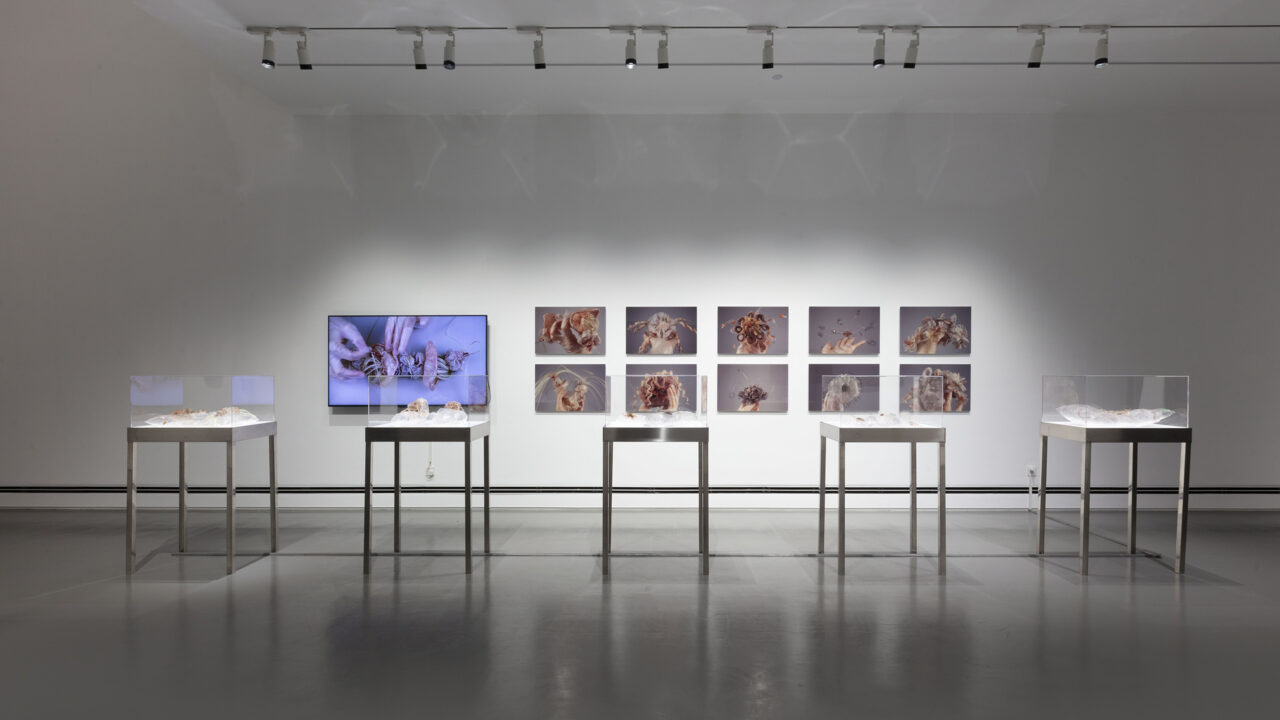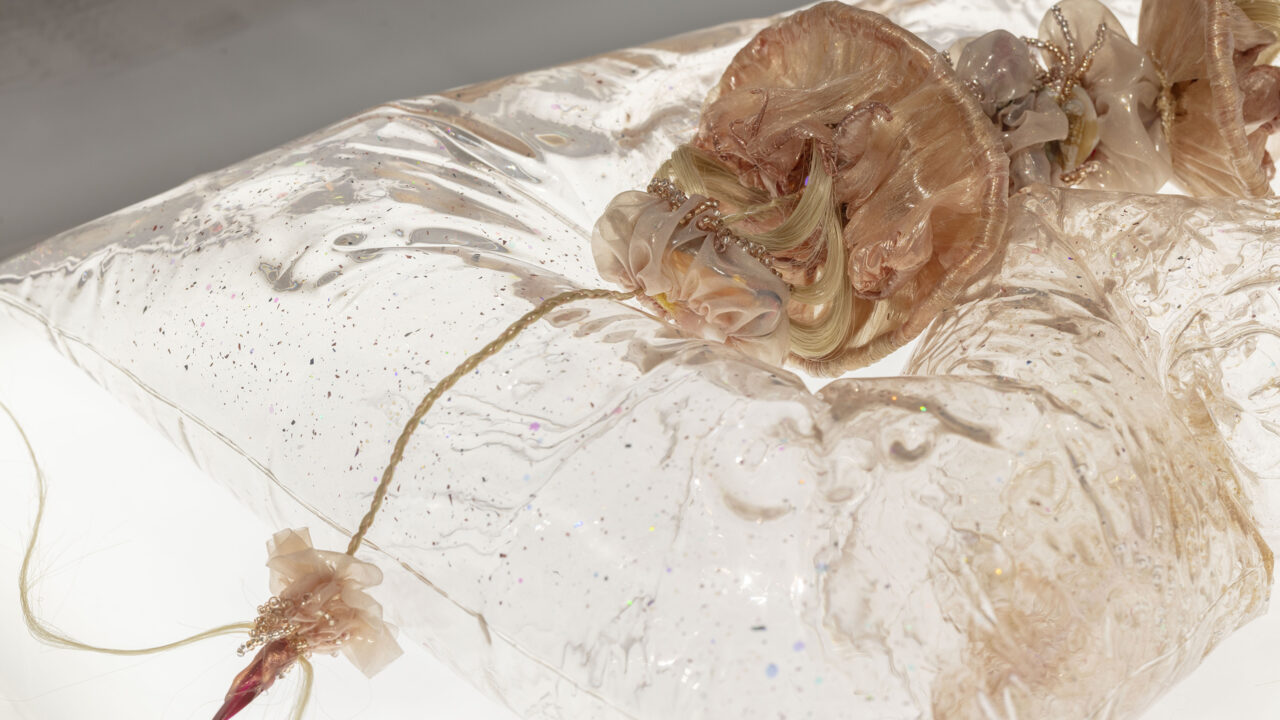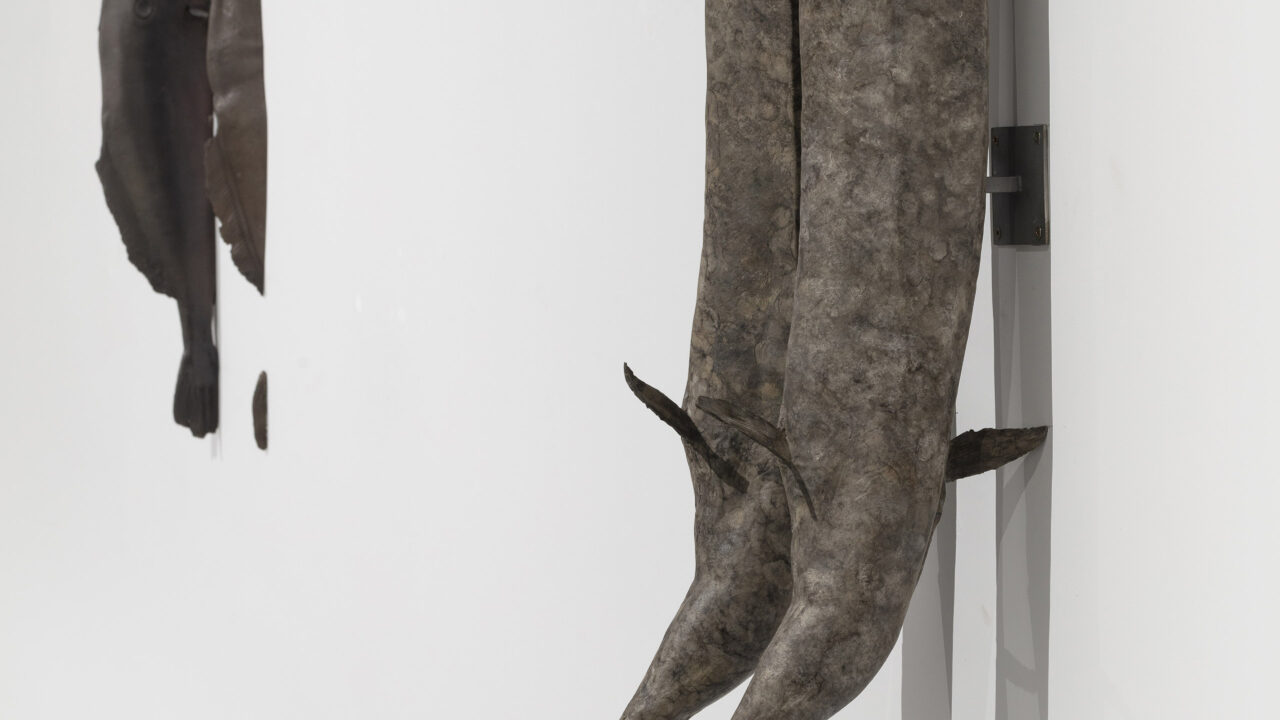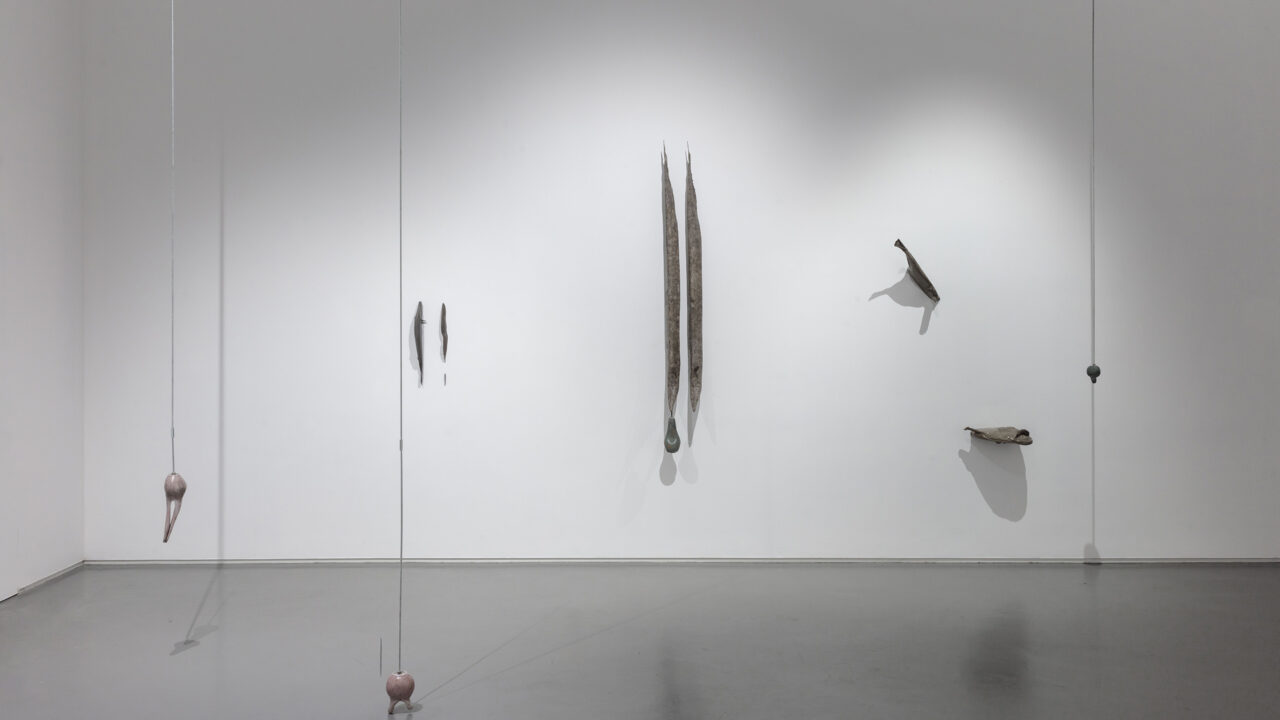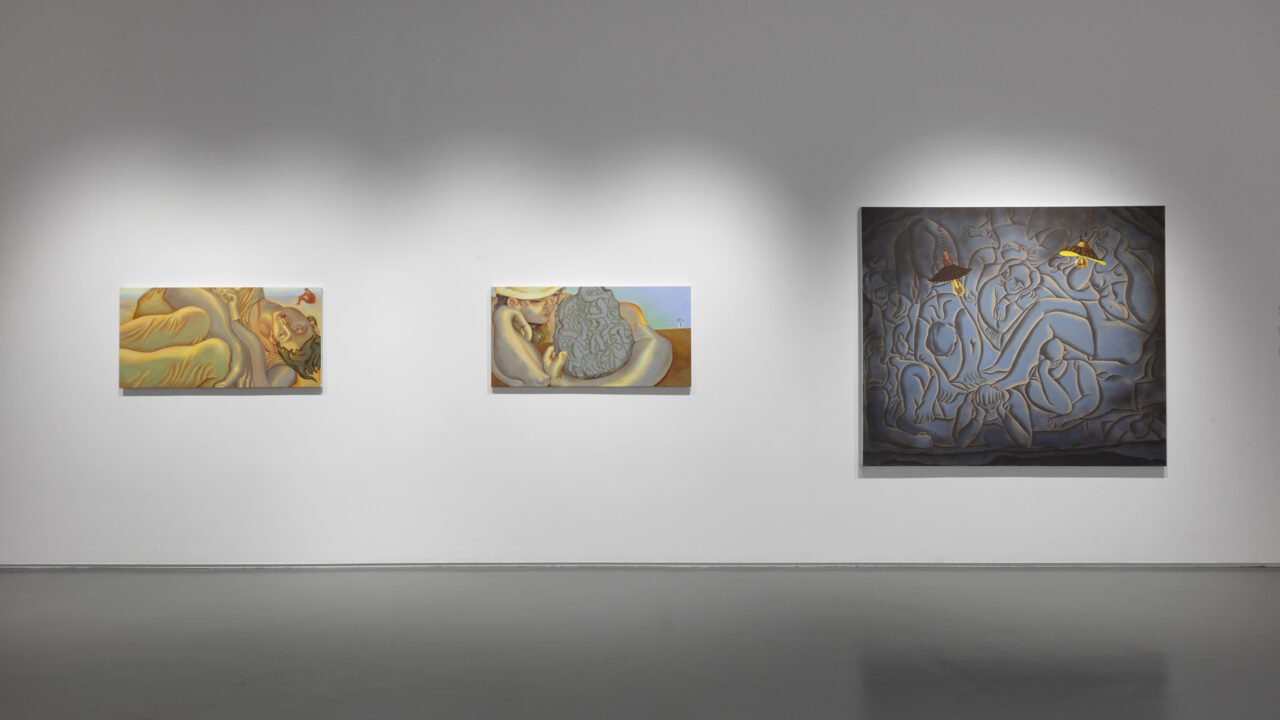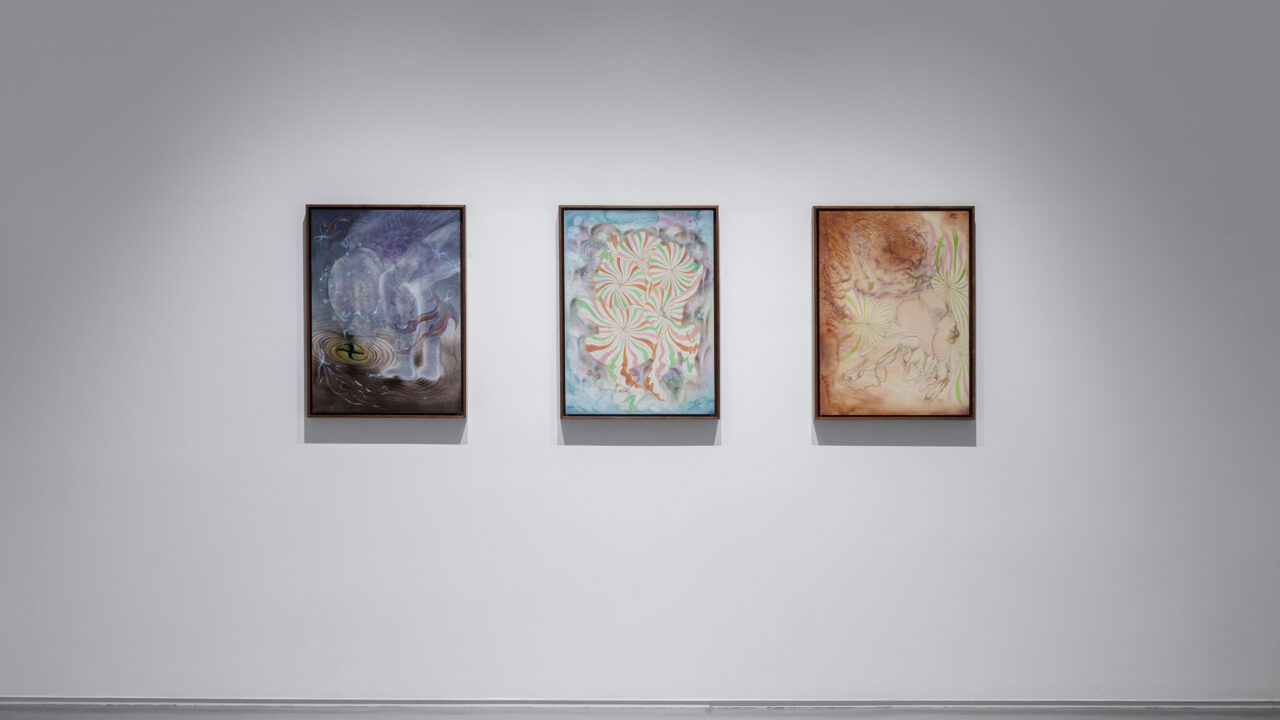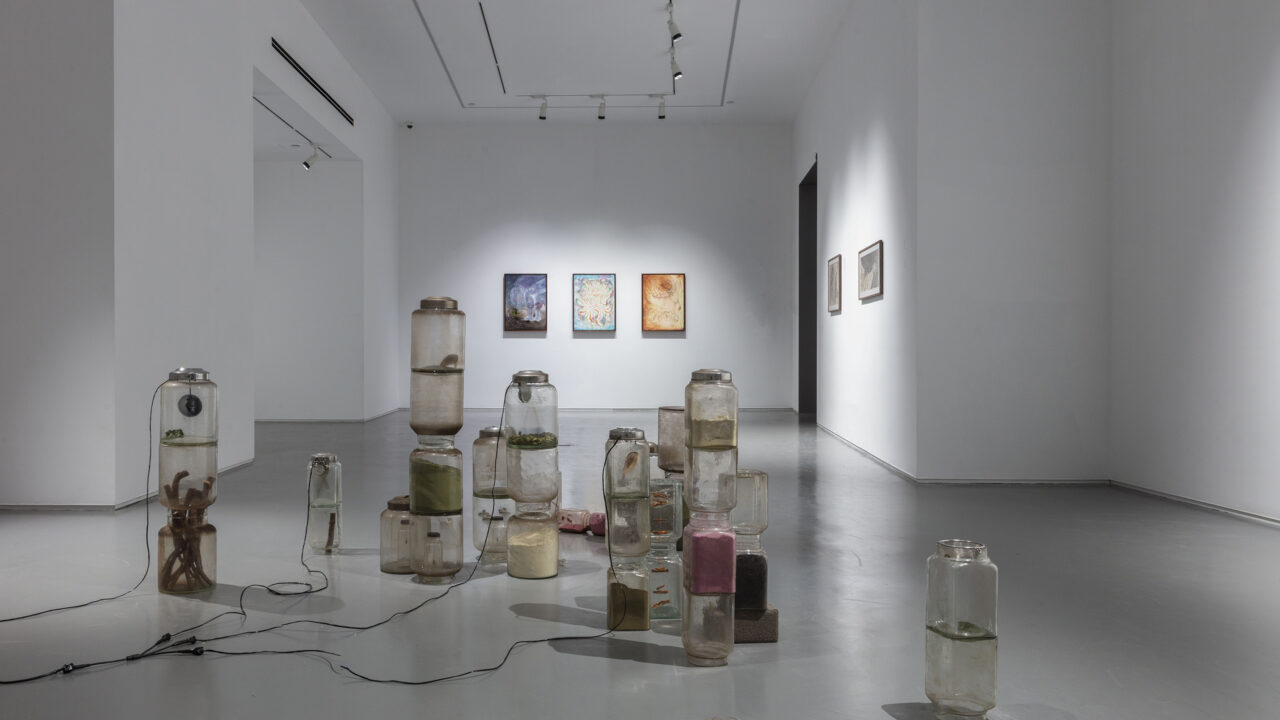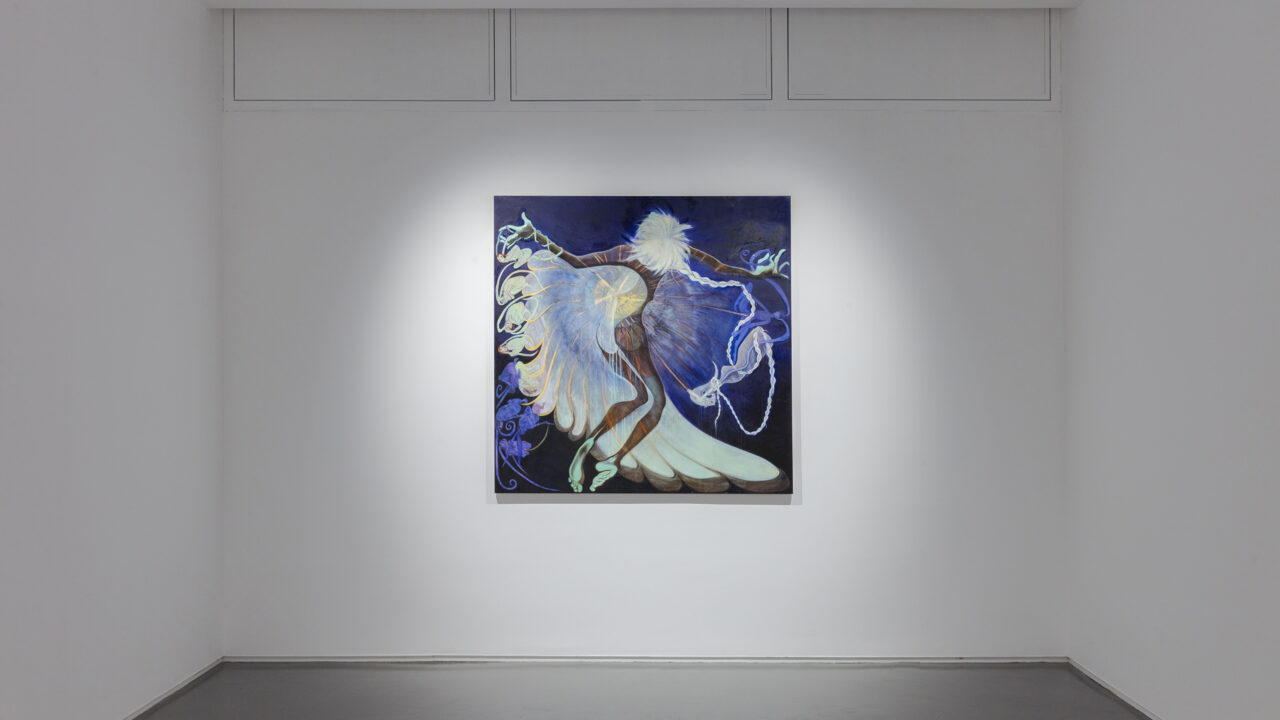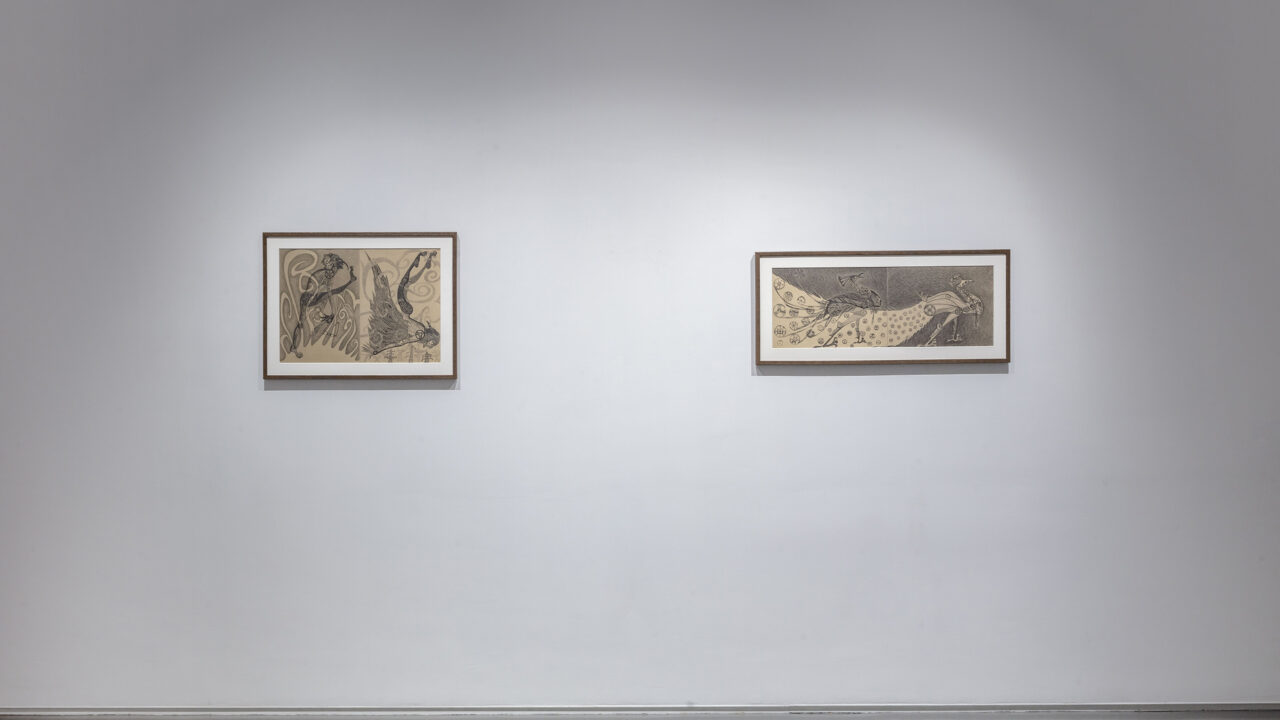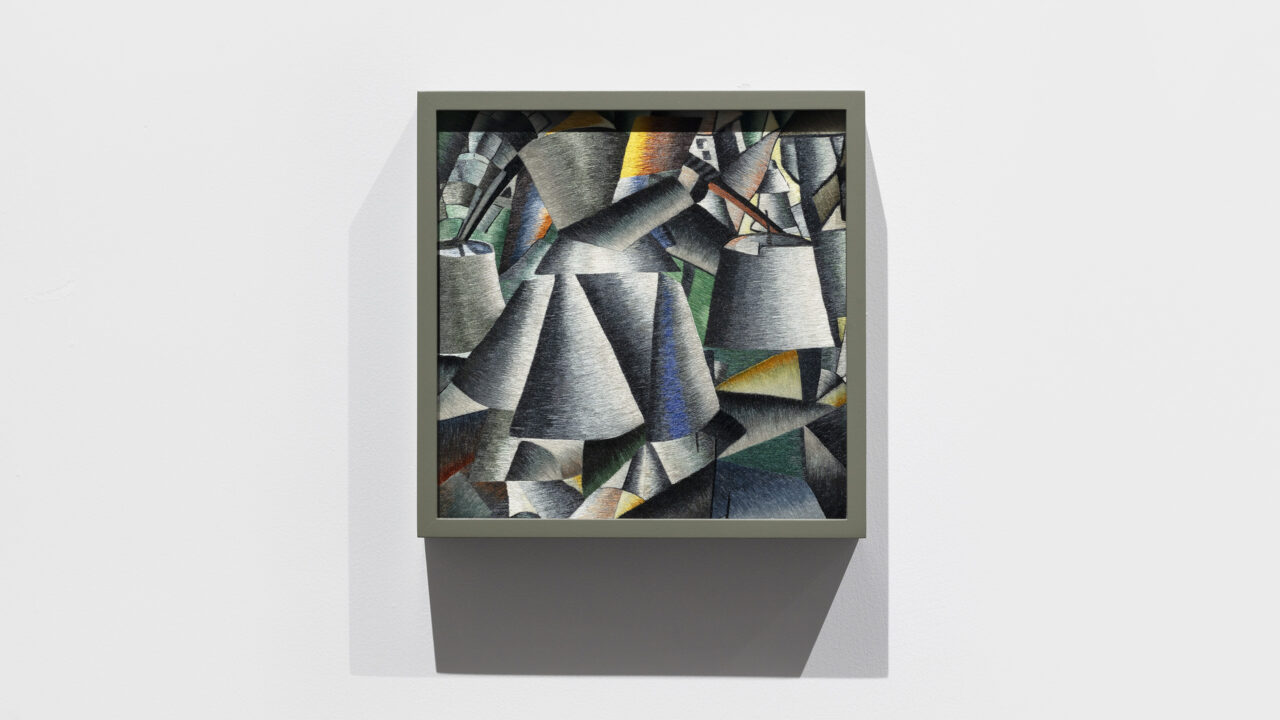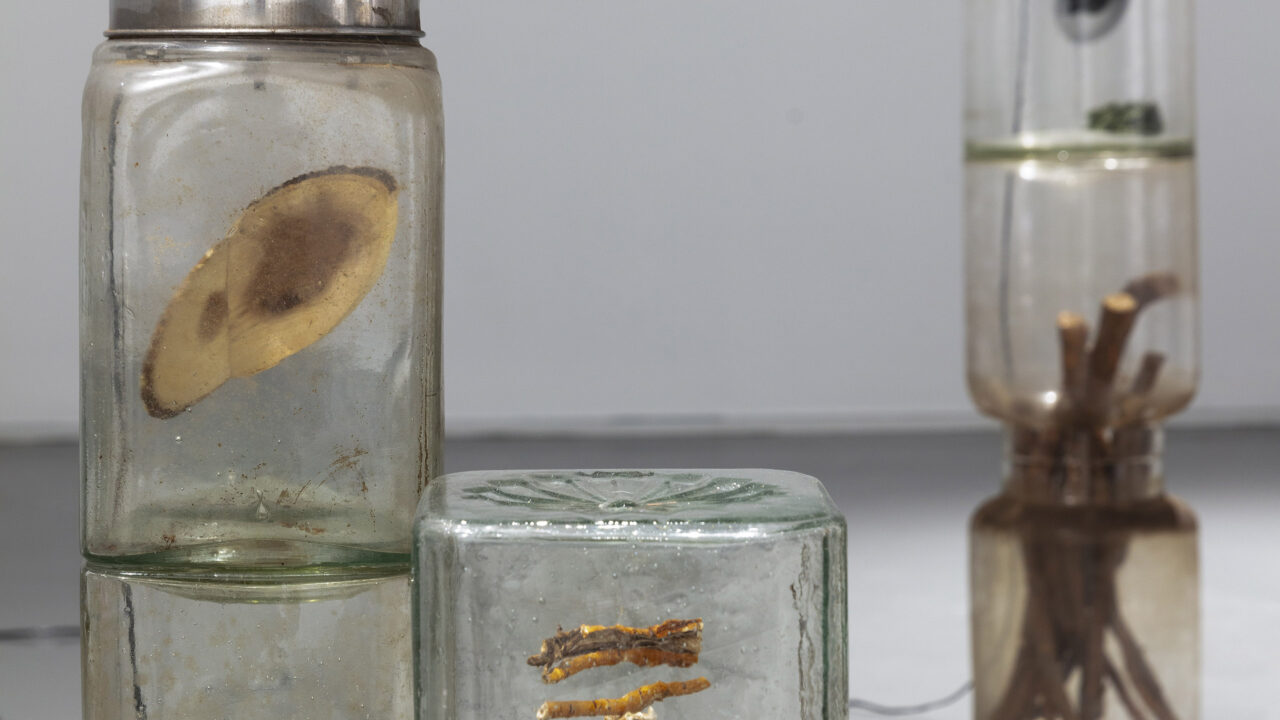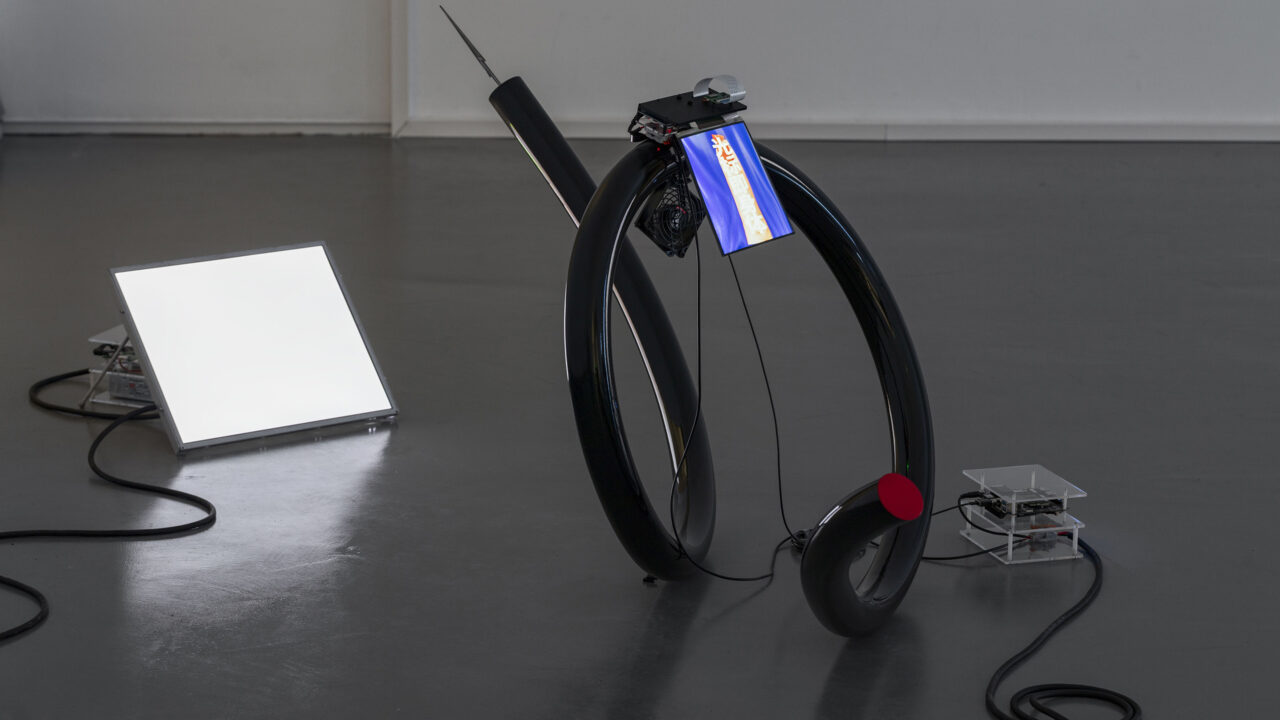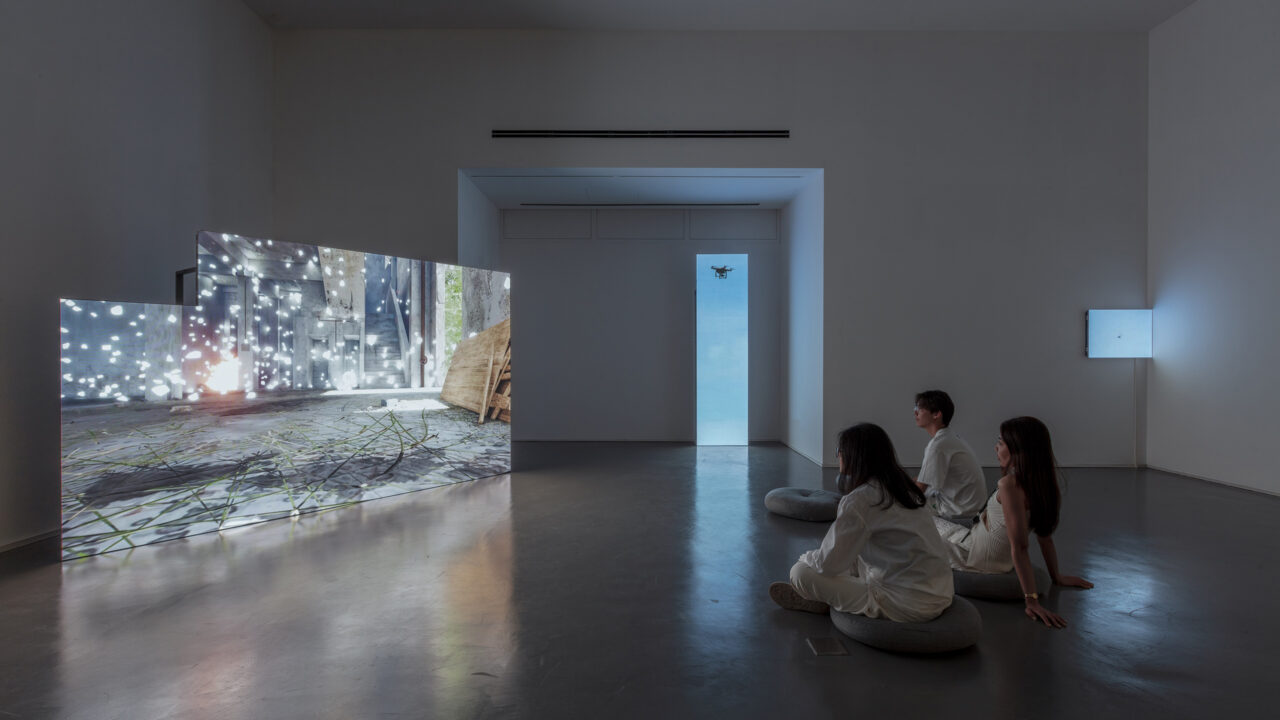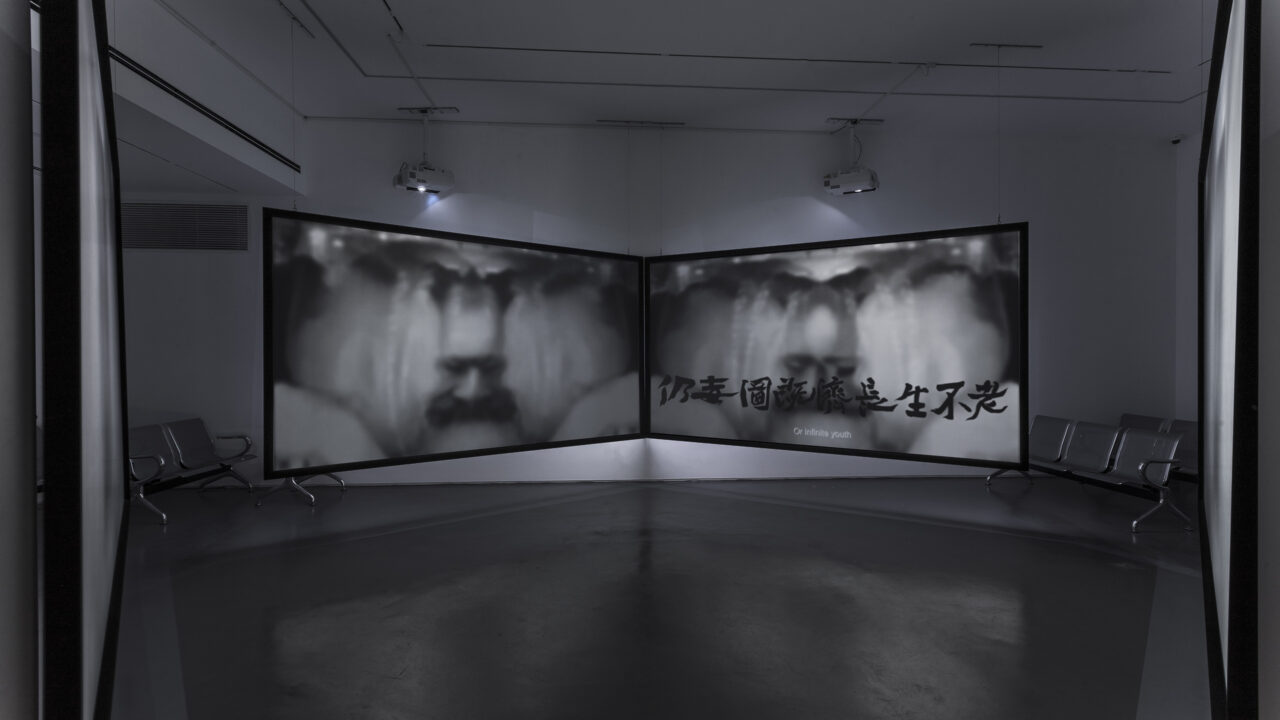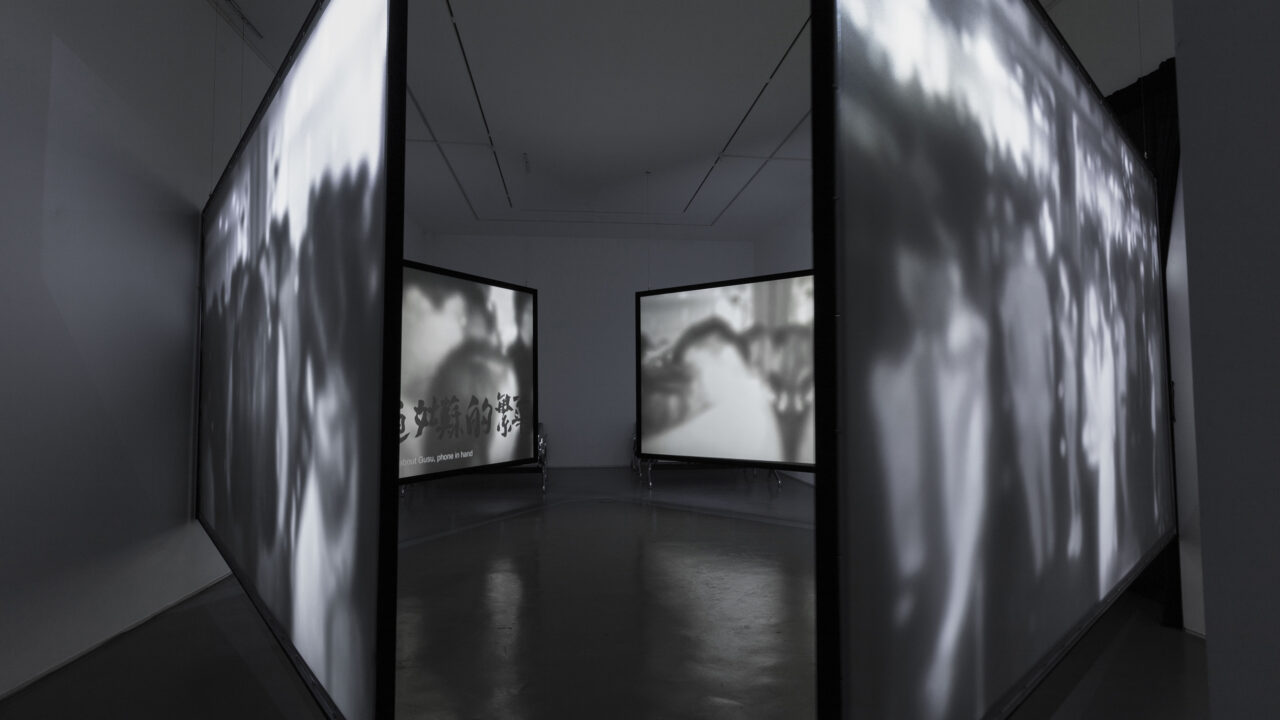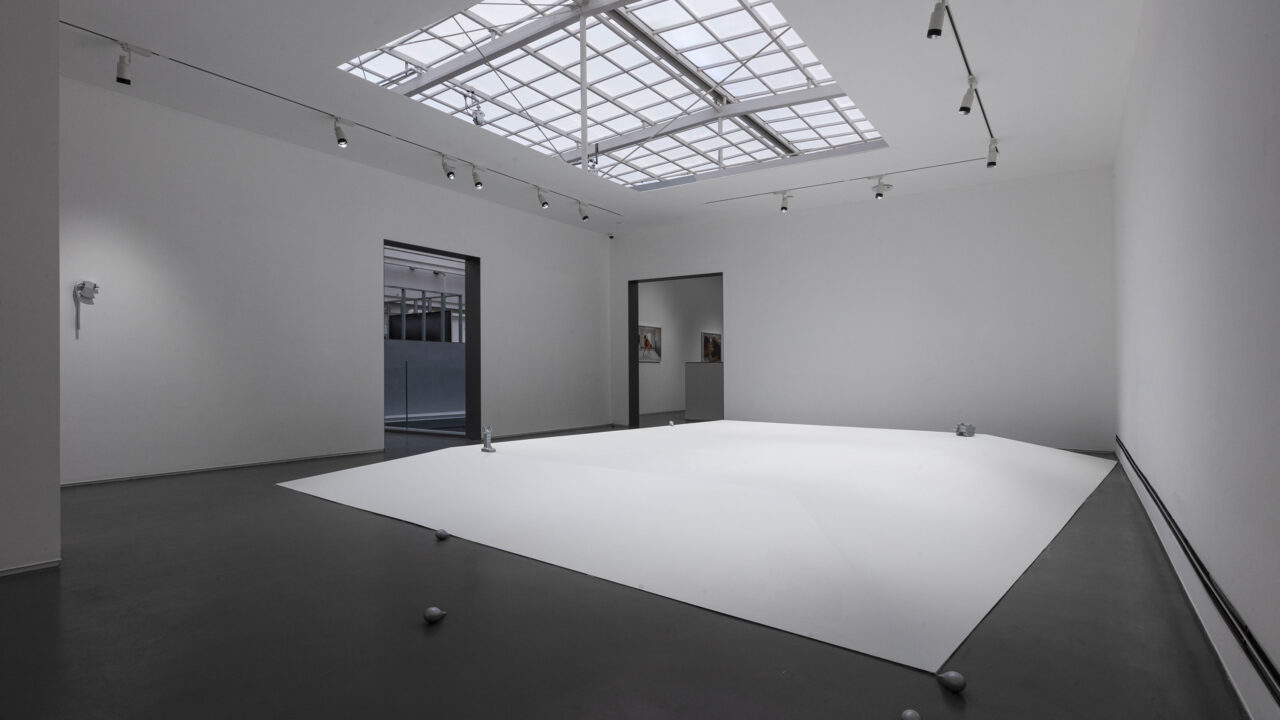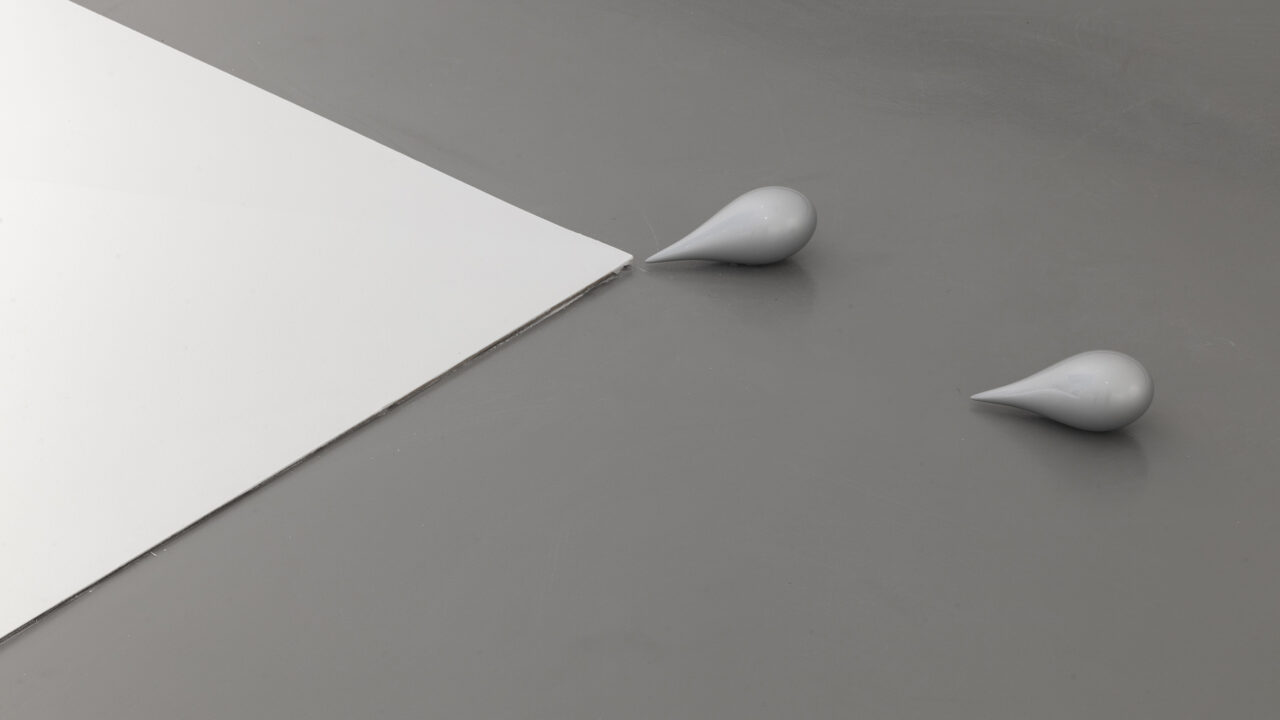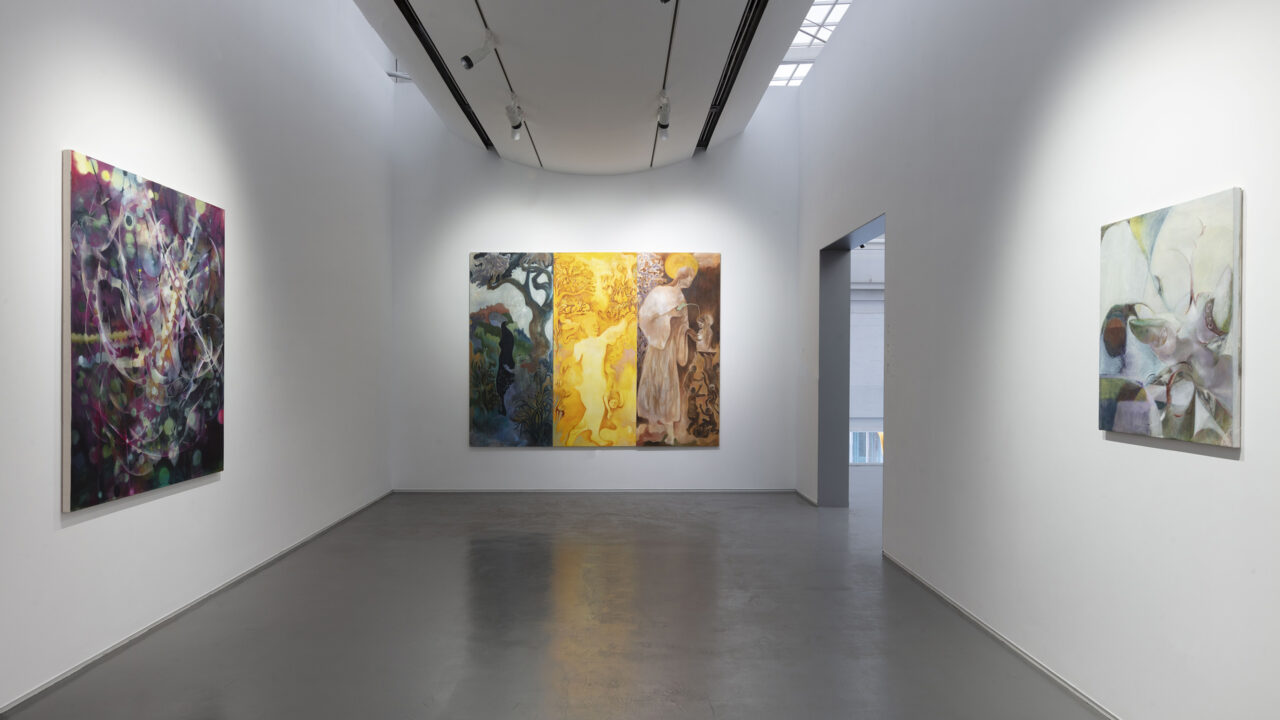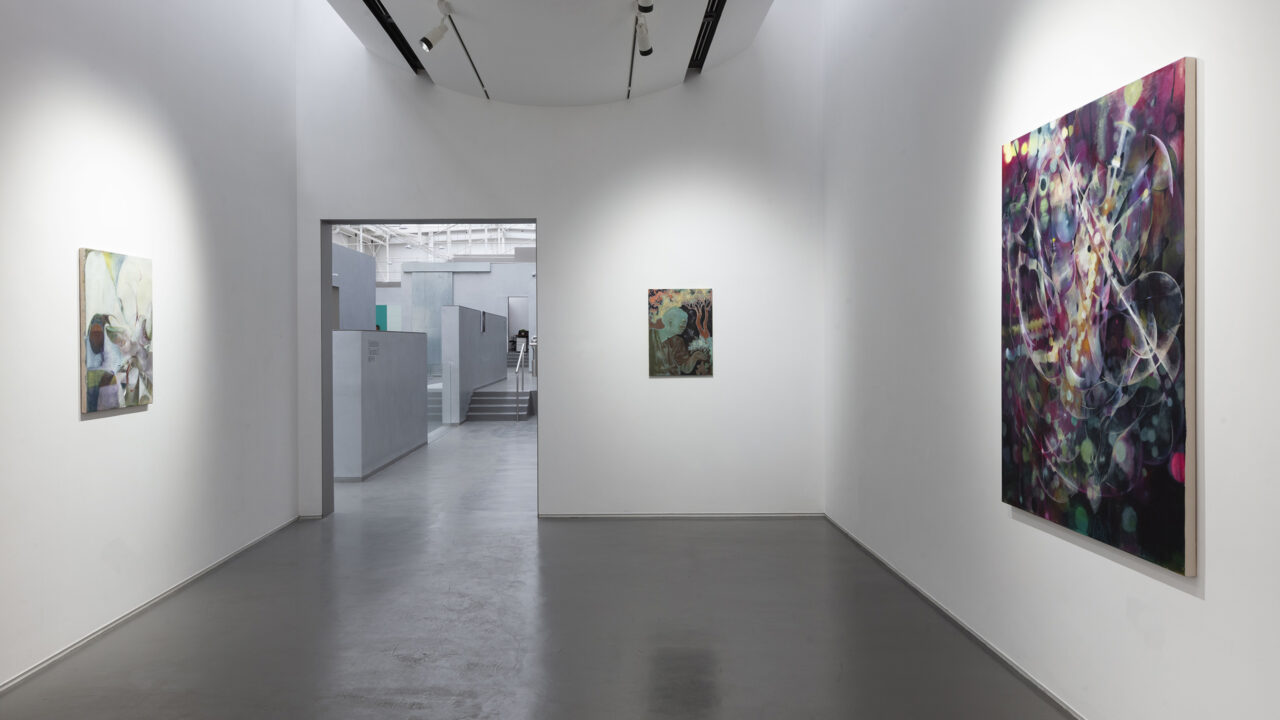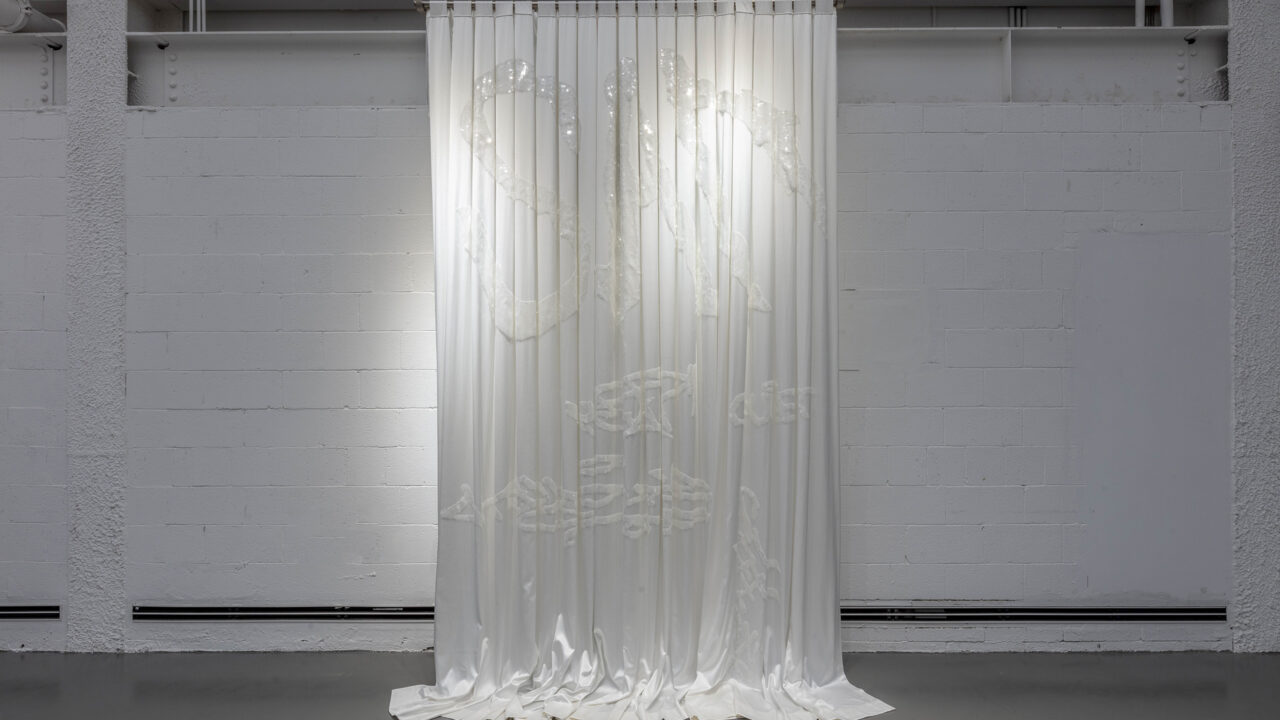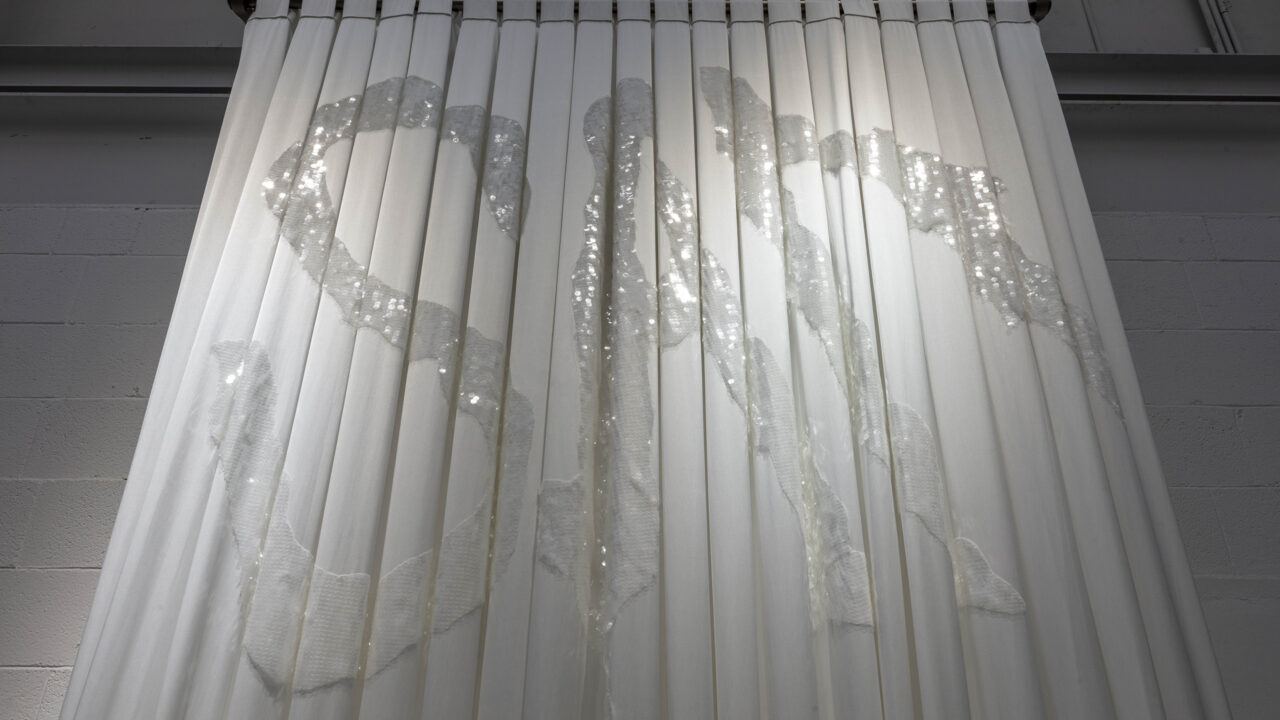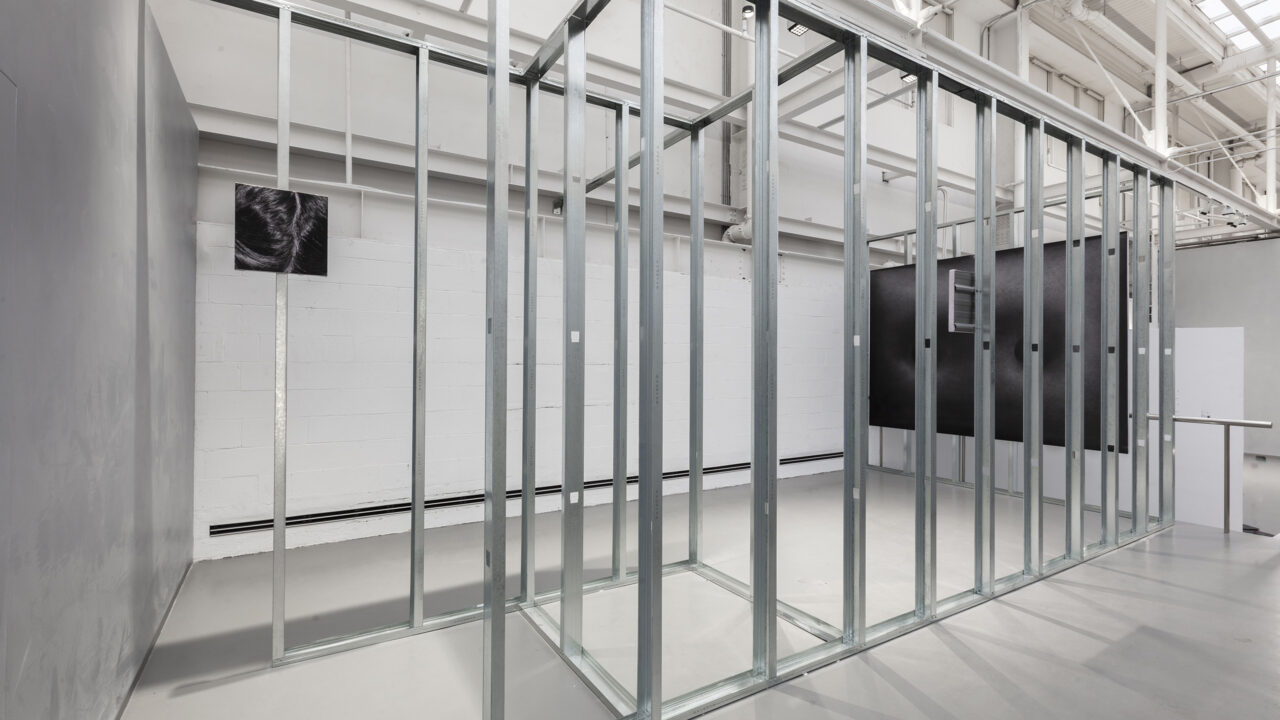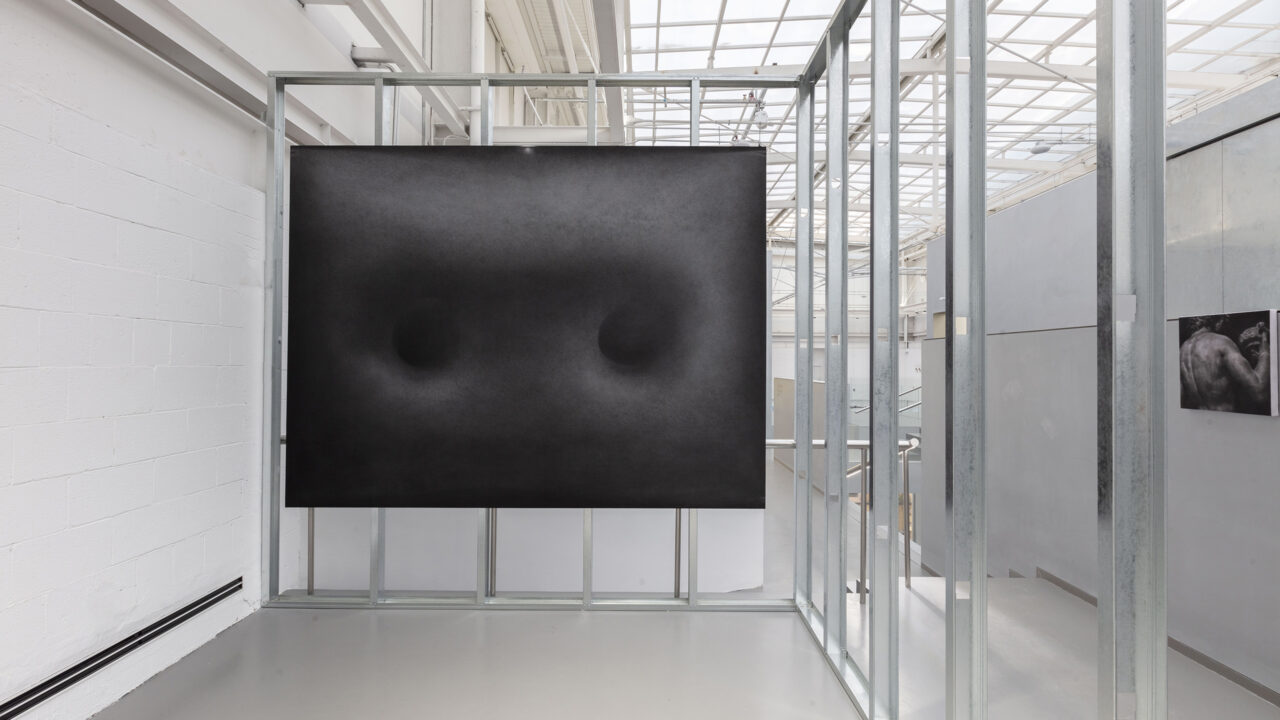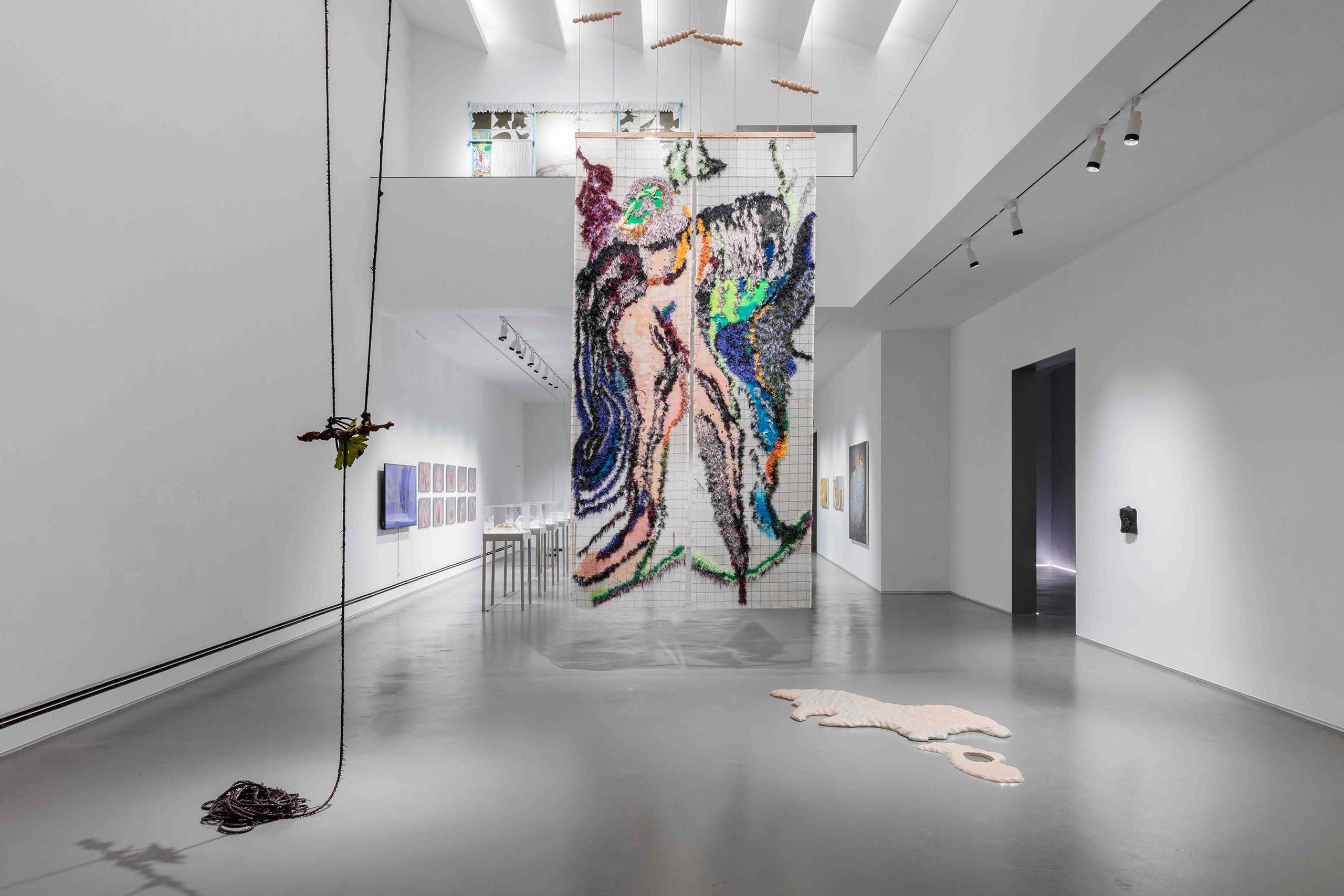
ARTISTS
Shu Cao
Chi Tien Lin Cheng
Shiwei Ding
Hei Di Li
Pixy Liao
Min Jia
Ke Peng
Qian Qian
Li Li Ren
Chun Shao
Wing Po So
Shiwen Wang
Ye Wang
Huidi Xiang
Yibei Zhang
Yunyao Zhang
Ke Zheng
Zhilin Zheng
Payne Zhu
ABOUT THE EXHIBITION
As a highly anticipated, recurring exhibition programme introduced to coincide with the opening of the institution, X Museum Triennial is a three-year recurring review of Chinese contemporary art and its development. With a continuous focus on emerging artists, the second edition, Home Is Where the Haunt Is, brings together eight newly commissioned works and more than 30 recent works from 19 artists. Encompassing kinetic sculpture, e-textile, silk embroidery, site-specific installation and simulation video installation, the exhibition offers a rich audio-visual experience that explores the enduring cultural connotations of ‘home’ through the eyes of a new generation of Chinese artists and their diasporic community in the context of globalisation.
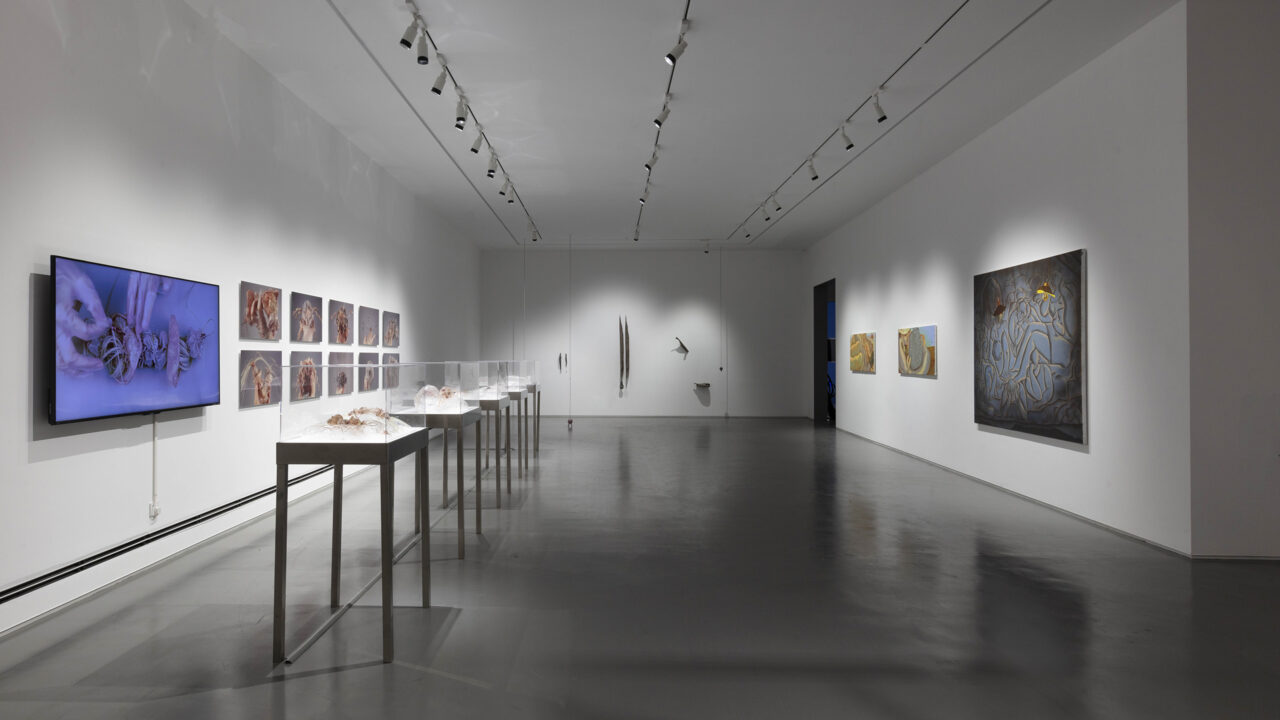
The exhibition responds to the complex social and historical construct of ‘home’ and its etymological implication, ‘haunt’. Connecting ideas of intimacy, memory, heritage, ethnicity, alienation, possession and obsession, Home Is Where the Haunt Is brings together a wide group of multicultural Chinese artists whose fluid practice constantly straddles between home and elsewhere, individual and community, past and present. As a universal social institution and an essential constituent of society, ‘home’ denotes a dwelling place and bears the sentiment of the permanence of history. Broadening home as a hotbed for psychological states, the exhibition explores the evolving of human selves in a global context of cultural heterogeneity and that which invades or disturbs it. From physical contact induced by e-textiles in moments of isolation, to the various uses of mulberry in the system of Chinese Medicine, to coral and deep-sea creatures, works in the exhibition expand intimacy as a practice of generative kinship—the latest ecosystem formed by new technology and the relational existence of organisms.
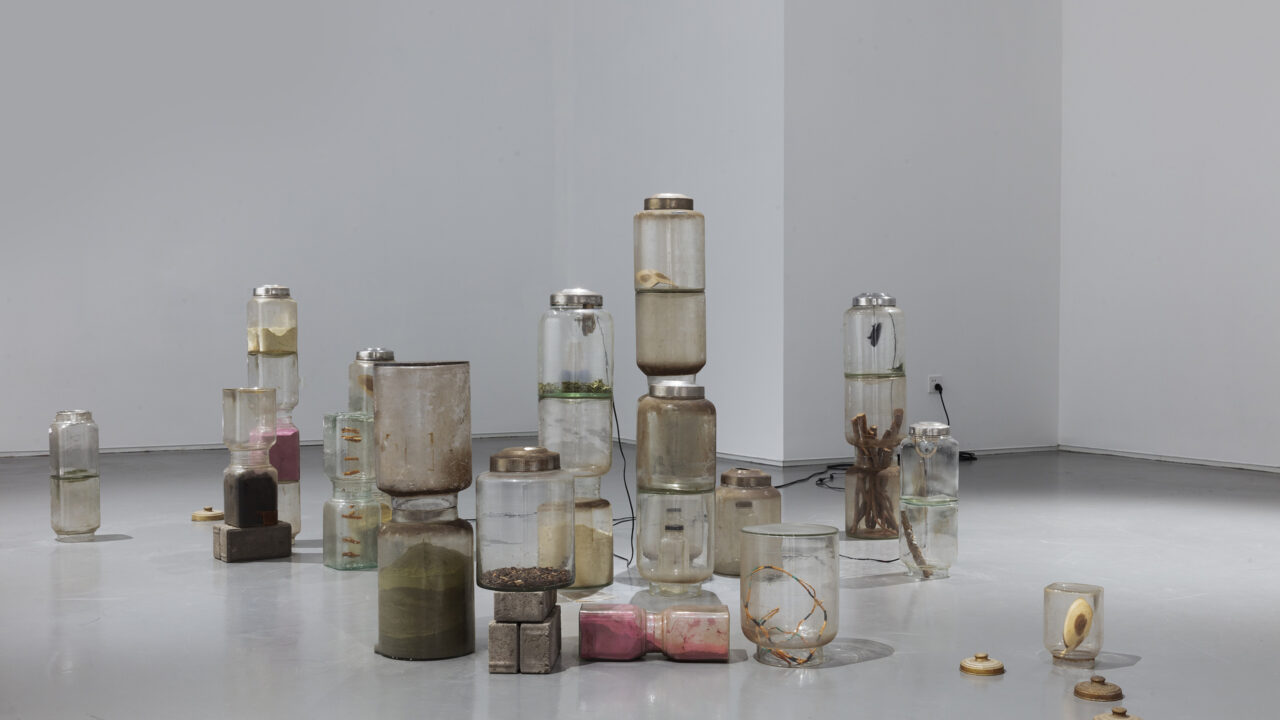
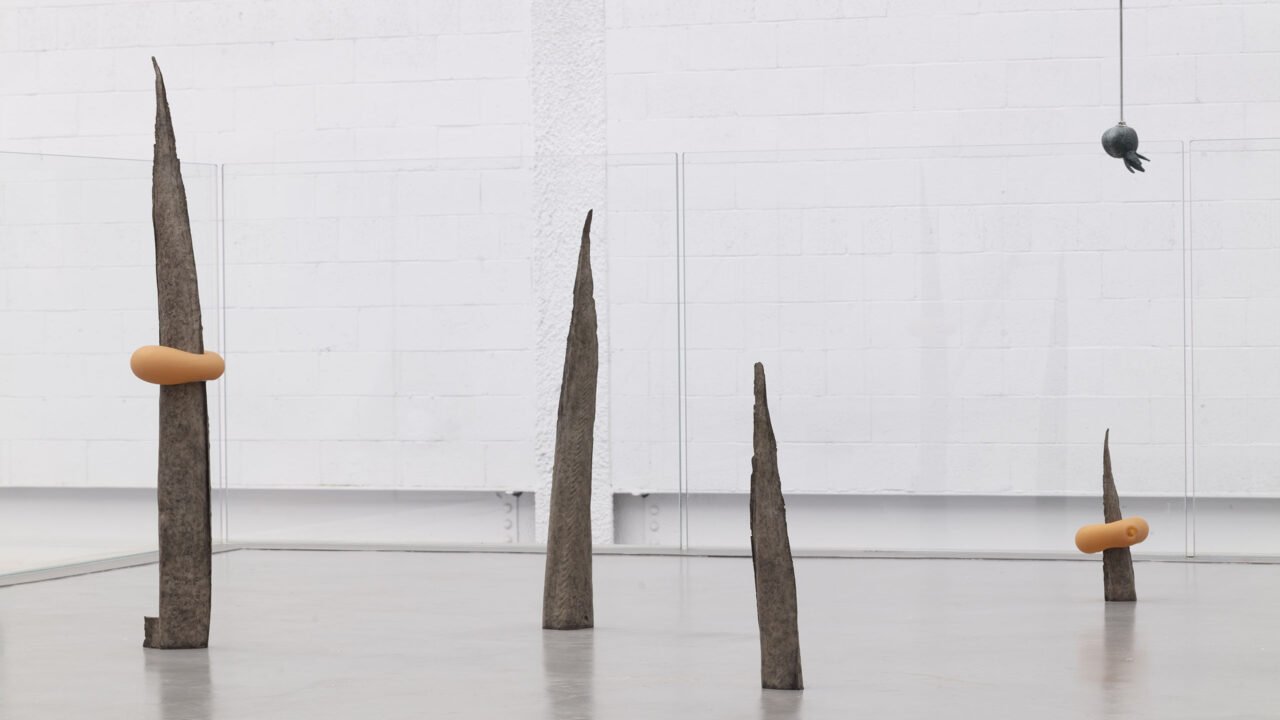
History infiltrates the current through memory and heritage, through possession and obsession. By unravelling the multiple connotations of ‘home’, the exhibition also examines history’s effect on the present, it delves deeper into the roots of Chinese culture through a wide arrange of installations. Encompassing sound clips, audio-visual installations, and site-specific works, the artists in this exhibition use Xiang (Hunan) embroidery and Shaanxi shadow puppetry, folktales, and novels in their contemporary expression. Revolving around diasporic memories and fantastical futures, the exhibition also attempts to invoke the interstitial existence between now and then, time and space, presence and absence. The works in the exhibition oscillate between abandoned buildings on Bangkok’s streets, linger around the dimly-lit dance pool of ballrooms and excurse in the sugar refineries of the previous century. After the fragments of time are pieced together, these scenes of profound historical moments—often associated with a community’s ethnic relations and kinship—become places where hauntology comes to exist.
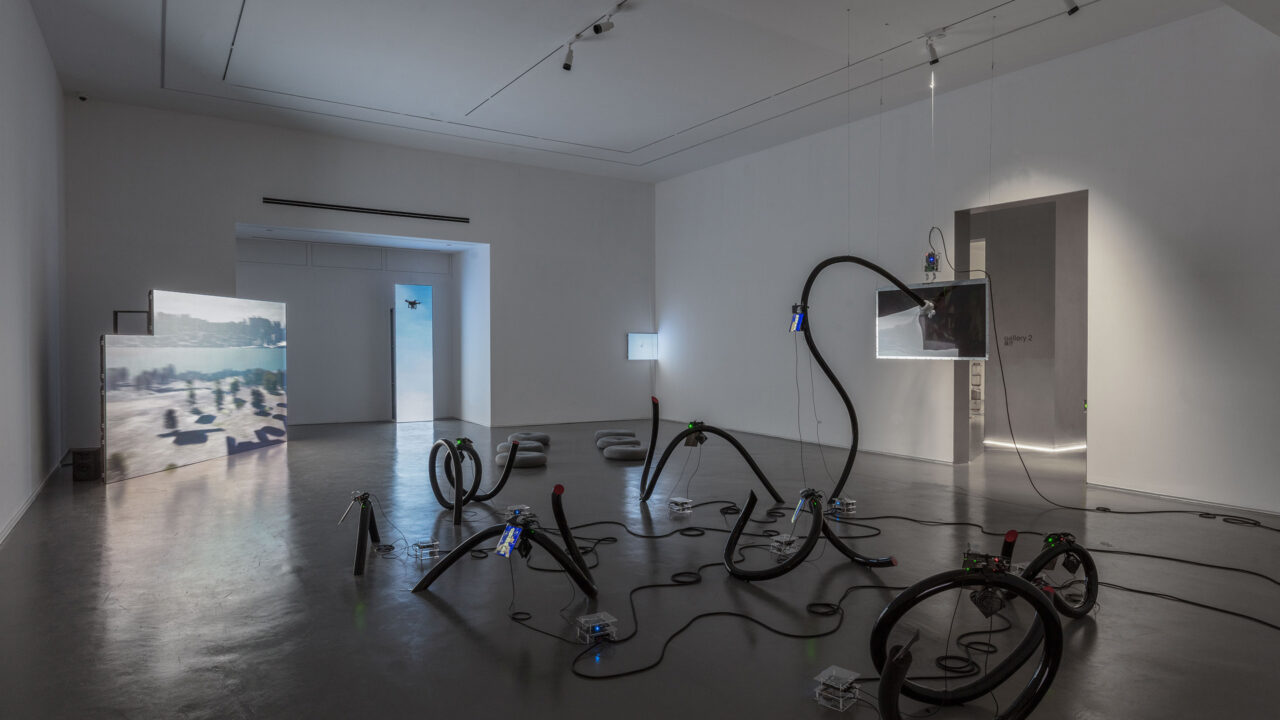
As a research-based project on the development of contemporary Chinese art over the past three years, Home Is Where the Haunt Is zooms in to the millennial artists growing up under the tide of globalisation by unwrapping the intricate meanings of ‘home’. These artists are simultaneously inside and outside, and their practice is often situated at the boundary between knowledge and technology. Some works are tender hymns of love and dependence that emerged during momentous migration; others connect reality and the virtual, exploring the invisible power structure lurking behind the human and technology interaction through reshaping the fragments of mundane life. In these boundary-defying expressions, the fluid concept of ‘home’ lingers over various times and spaces through senses such as scent and sound. Ultimately, the exhibition returns to artists’ practice and the complexity incurred by media and representation through a multifaceted, multi-linear discursive approach, thus responding to the enduring and timeless essence of ‘home’.
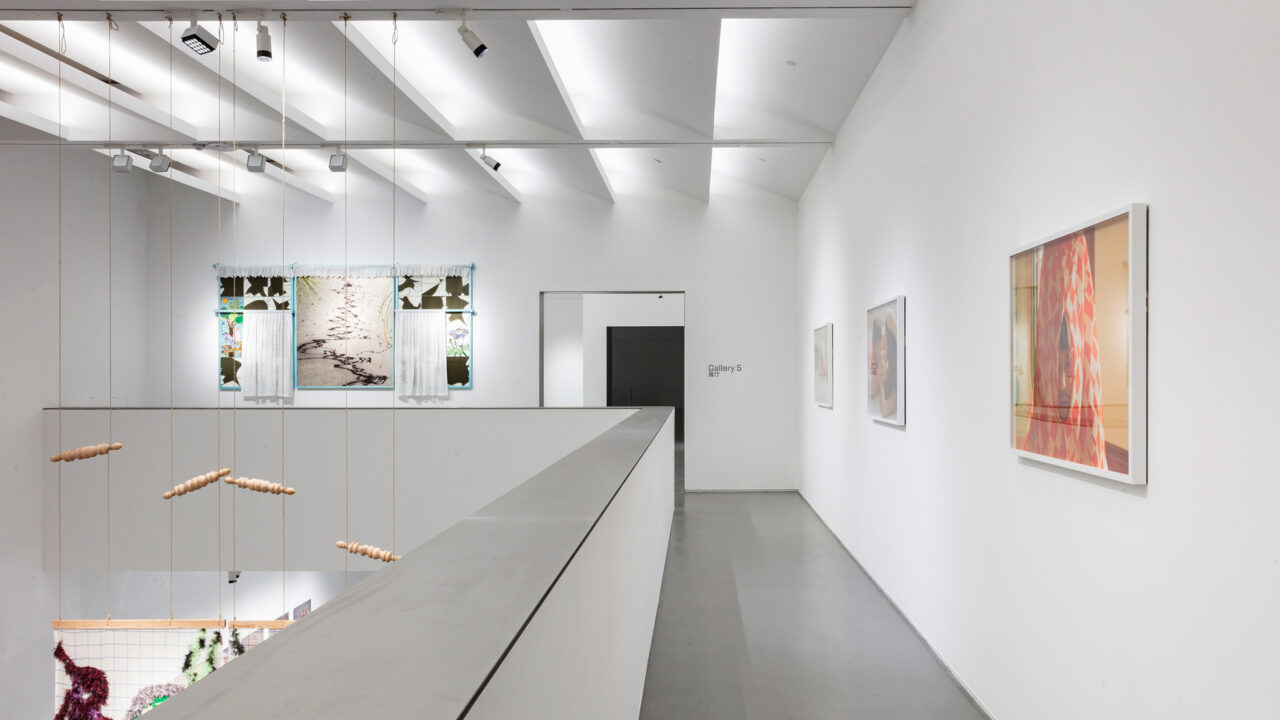
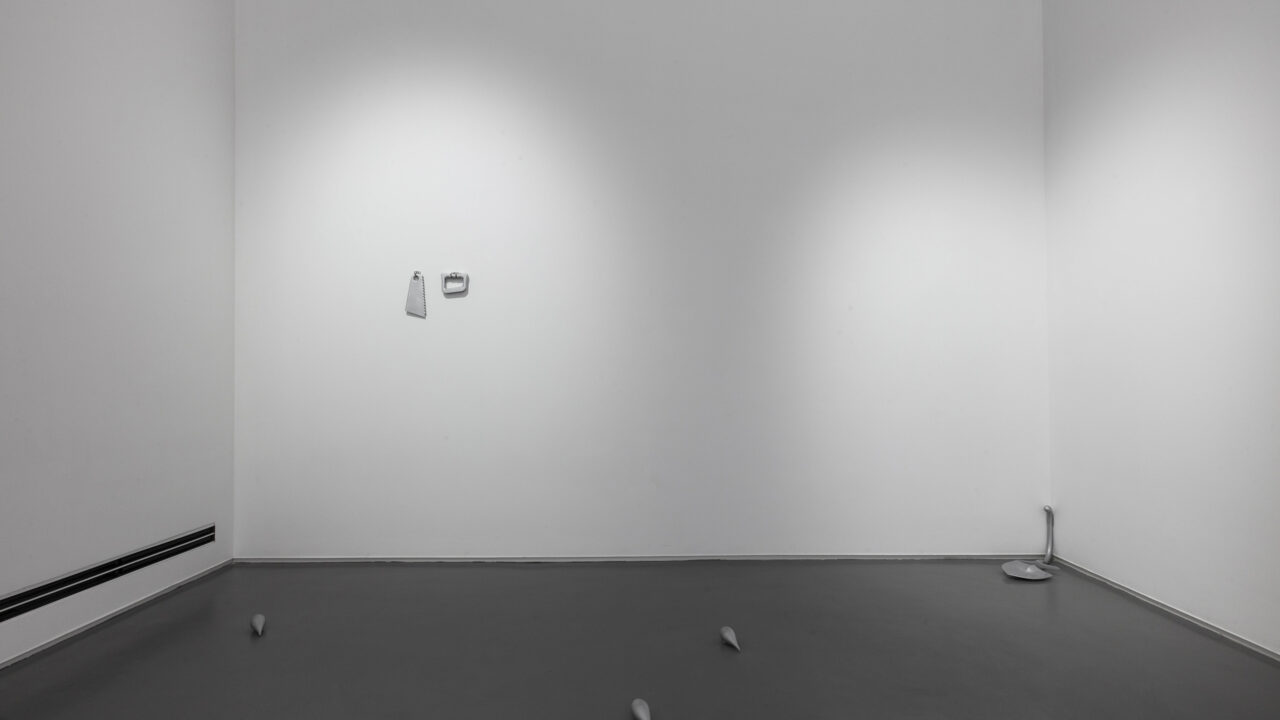
X Museum Triennial Award is founded in coincidence with X Museum Triennial, and it aspires to encourage a wider interest in contemporary Chinese art and to introduce emerging Chinese artists. For the second instalment, one participating artist will be awarded for an outstanding presentation at the end of the exhibition. Comprising 3-4 influential international curators from different regions, X Museum Triennial Awards strives to have a diverse jury panel that provides multicultural perspectives.
ABOUT THE CURATORS
Poppy Dongxue Wu is the Chief Curator of X Museum in Beijing. She initiated and implemented X Museum’s institutional structure and curatorial framework during its founding stage in 2019. Wu curated the inaugural edition of the X Museum Triennial in 2020, featuring a new generation of contemporary Chinese artists; and she was also involved in establishing the ‘X Museum Triennial Award’. As a founding team member of the ongoing X Virtual programme, she curated the online exhibition ‘X Virtual Incubator’ in 2022. The project marks the first exhibition of the research-based, practice-led virtual initiative of the museum. Wu’s curatorial practice encompasses virtual space and technology, architecture, contemporary Asian art and fashion production. Her recent exhibitions at X Museum include ‘The Endless Garment’, 2021-22; ‘Yngve Holen: Foreign Object Debris’, 2021. Her writings appear in Phaidon’s ‘Vitamin’ series, Spike Art Magazine, and independent journals.
Wu graduated from Royal College of Art with a degree in Curating Contemporary Art, and University of Liverpool in Architecture (RIBA Part 1).
Cyril Kuizhen Rao is the Head of Public Programme of X Museum in Beijing. Since the opening of the institution, he has curated more than 60 community-oriented programmes, establishing a public platform primarily aimed at knowledge sharing. Particularly interested in gender variance and queerness, Rao has curated several exhibitions focusing on gender and identity, including ‘The Kick Inside’; ‘Antonio Obá: Fables’; ‘Christina Quarles: Dance by tha Light of tha Moon’. His recent research lies in the intersection of food anthropology, minority history, and gender identity.
Rao graduated from the University of Manchester with a degree in History of Art, and the Centre of Culture, Media and Creative Industries at King’s College London.
About The Artists
About The Curators
